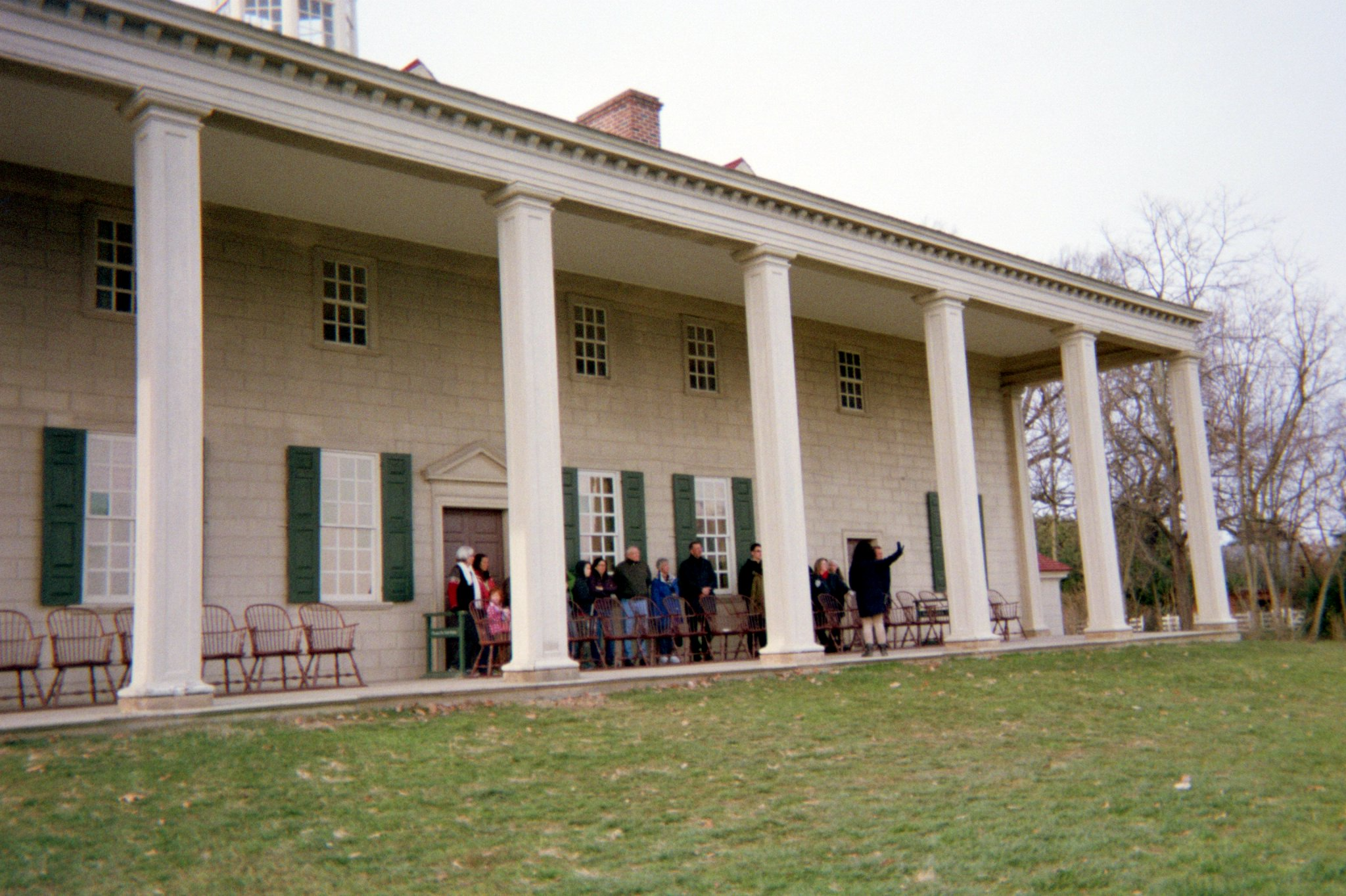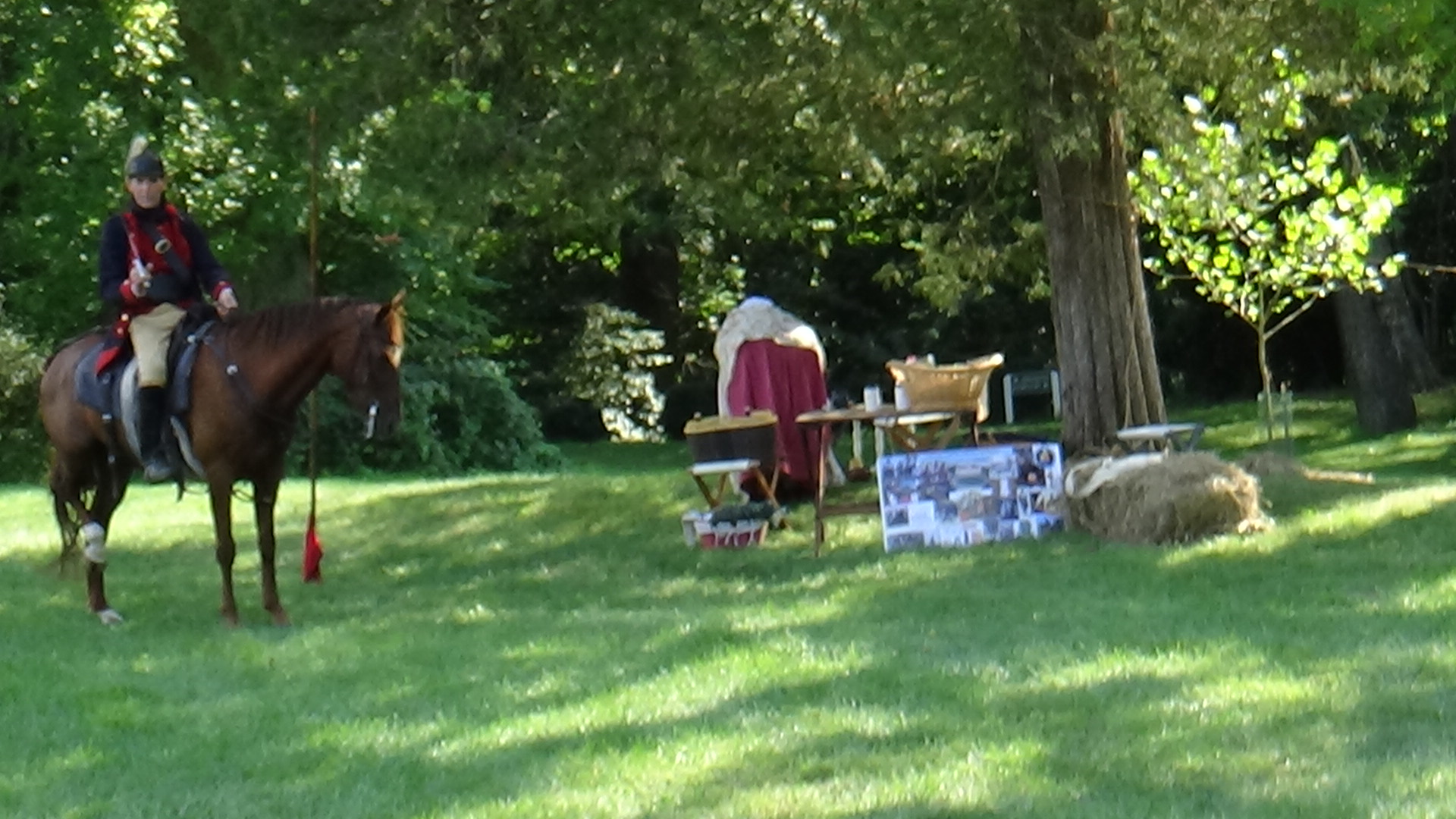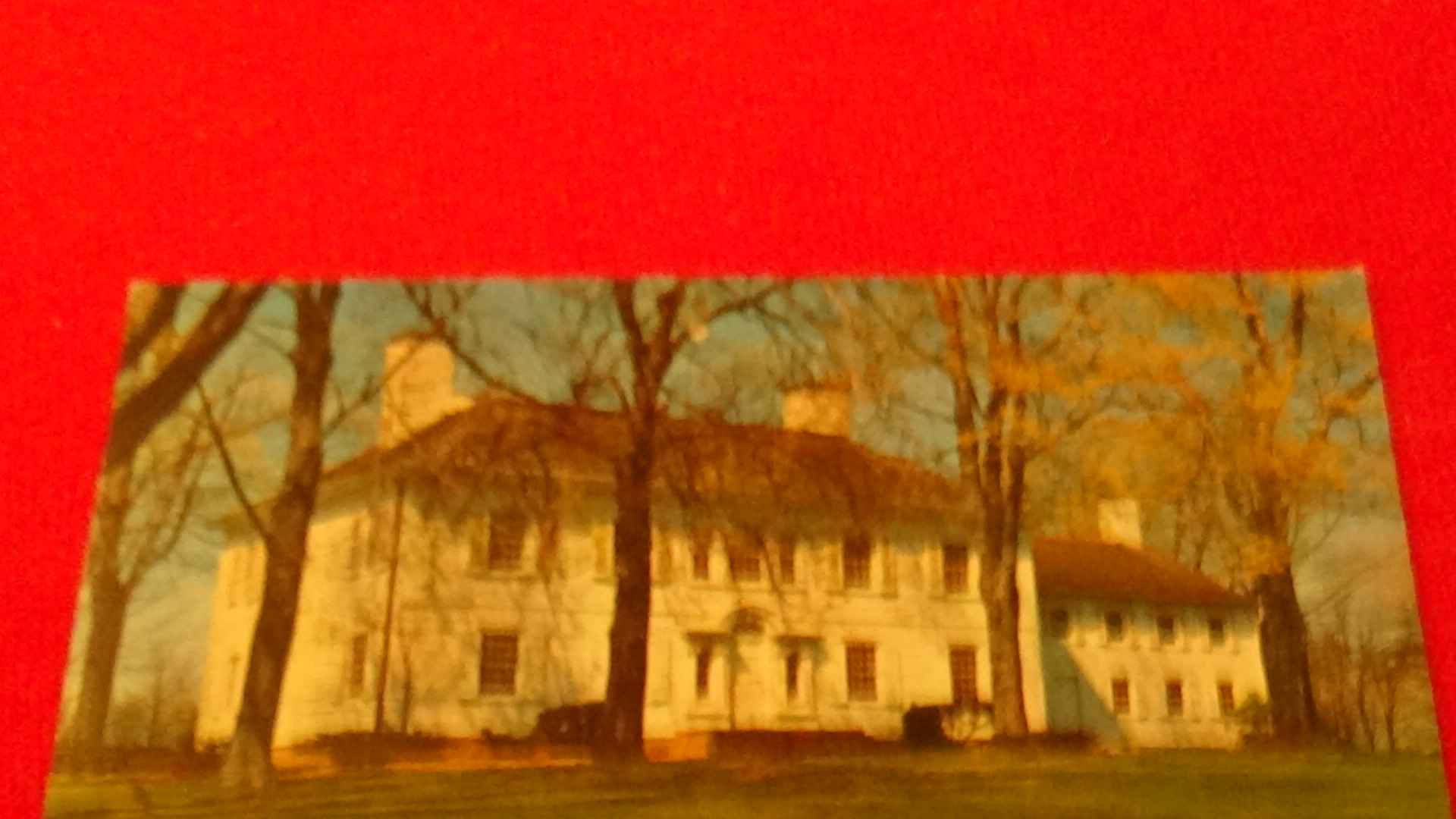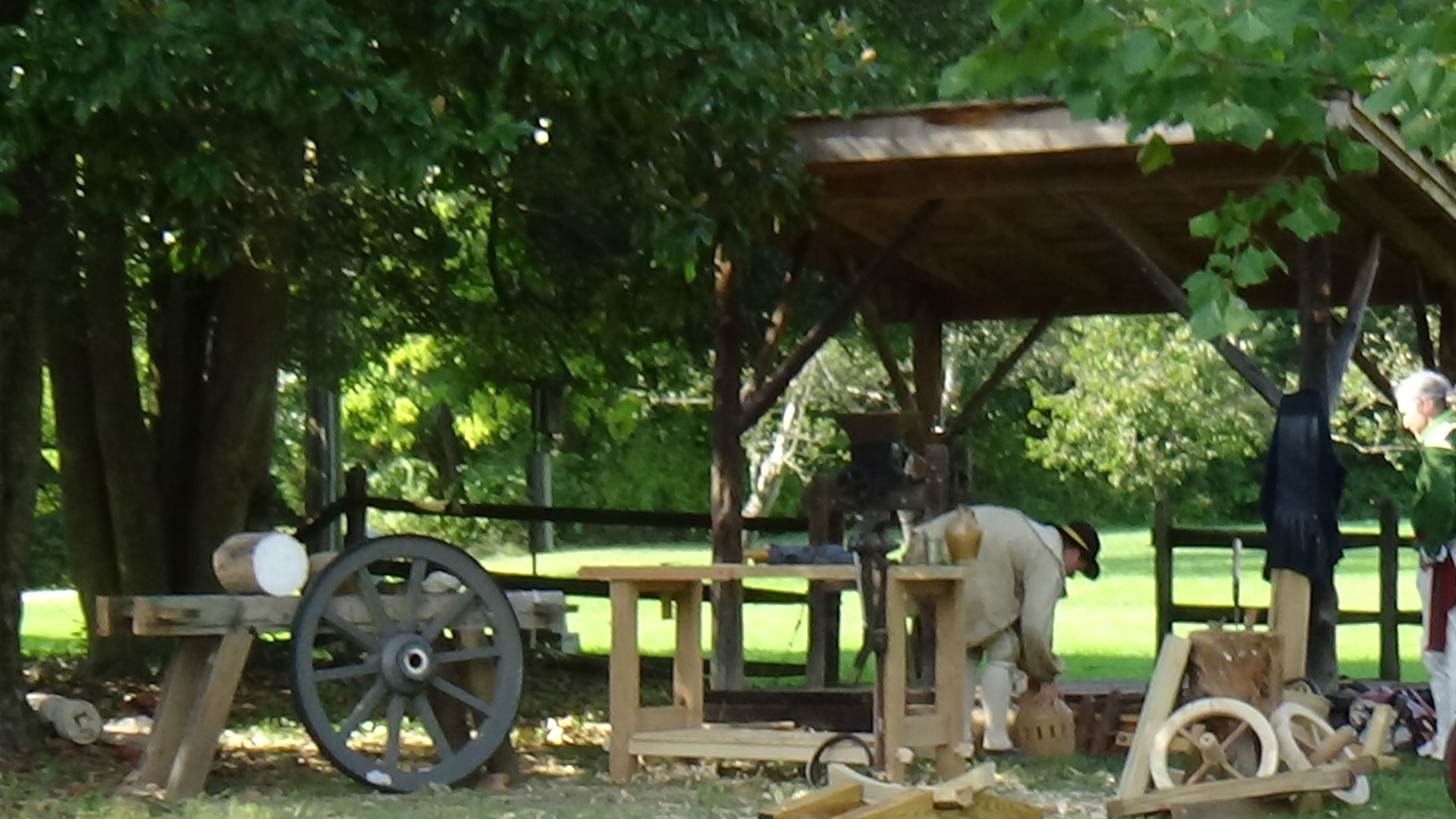General George Washington in New Jersey
General George Washington was commander of the American Continental Army in and around Morristown, New Jersey during two critical winters of the Revolutionary War in 1777 and 1779-80. This location served as the main encampment of the new American army and the headquarters of General Washington, Commander-in-Chief.
 General George Washington didn't always remain at his home in Virginia. He traveled to other states like New Jersey.
General George Washington didn't always remain at his home in Virginia. He traveled to other states like New Jersey.Here General George Washington reorganized his weary and depleted forces almost within sight of strong British lines at New York. Lafayette brought welcome news of the second French expedition sent to aid the weary American forces and their commander.
The small New Jersey village called Morristown became the military capital of the United States. It sheltered the American military forces from bitter cold, hunger, hardship and disease. It became the resting place for resilient people fighting for “life, liberty and the pursuit of happiness and fed their will to fight for independence and freedom from Great Britain.
The first main encampment of the Continental Army in Morris County, New Jersey began on Monday January 6, 1777. The troops set up camp in the snow-covered woods to establish the new base of American operations during the Revolutionary War.
General George Washington’s immediate reasons for bringing his troops to Morristown were that it appeared to be the place “best calculated of any in this Quarter, to accommodate and refresh them.” He was also impressed with the demonstrated loyalty of Morris County to the cause of the patriots. Finally, there were three Continental regiments already stationed at Morristown. These forces arrived in the area from Fort Ticonderoga. General George Washington knew that these regiments would strengthen the forces already under his personal command.
General George Washington at Jockey Hollow
Nearly two and a half years passed by before the main body of the Continental Army again returned to Morristown. During that time the British captured and abandoned Philadelphia. Burgoyne’s Army surrendered to the Americans at Saratoga. France and Spain entered the conflict against Great Britain. General George Washington’s soldiers had endeared being under fire on numerous occasions. The army weathered the winter encampment periods at Valley Forge in 1777-78 and at Middlebrook in 1778-79.
 This Revolutionary War reenactor may be wearing a similar uniform to the ones the soldiers wore at the Jockey Hollow encampment.
This Revolutionary War reenactor may be wearing a similar uniform to the ones the soldiers wore at the Jockey Hollow encampment.During this period the financial affairs of the young United States had gone from bad to worse. The hoped-for benefits from the French Alliance had not yet materialized. The three-year enlistments in the Continental Army had only four or five months more to go before their expiration. The enemy still held Savannah. There were rumors that Sir Henry Clinton would soon leave New York by sea to attack Charleston. America approached what was destined to be the hardest winter of the Revolutionary War.
General George Washington told Nathanael Greene, then Quartermaster General, that he selected a site about three miles southwest of Morristown for the next winter encampment of the Continental forces under his immediate command. The site chosen lay in a mountainous section of Morris County known as Jockey Hollow. This area included portions of the “plantation” owned by Peter Kemble, Esq. and the farms of Henry Wick and Joshua Guerin
Many of the American troops reached Morristown during the first week of December. The rest arrived before the end of that month. As they arrived in camp, the soldiers pitched their tents on the frozen ground. Work to build log huts for more secure shelter from the elements began immediately. The winter had set in early with severe snowstorms and bitter cold. Major Ebenezer Huntington, of Webb’s Regiment, wrote that “the men have suffer’d much without shoes and stockings, and working half leg deep in snow.”
Nearly all the private soldiers had moved into their huts around Christmas. However, some of the officers’ quarters, which were left until last, remained unfinished until mid-February. A young Connecticut schoolmaster who visited the camp near the end of December described it as a “Log-house city,” where his own troops and those of other states dwelt among the hills “in tabernacles like Israel of old.”
About 600 acres of woodland were cut down in connection with the project. Logs notched together at the corners and chinked with clay formed the sides of the huts. Boards, slabs, or hand-split shingles were used to cover their simple gable roofs, the ridges ran parallel to the camp streets.
All the soldiers’ huts, designed to accommodate 12 men each, were ordered to be built according to a uniform plan. Huts were to be about 14 feet wide and 15 or 16 feet long in floor dimensions. The eaves were to be around 61/2 feet high. Huts were furnished with wooden bunks, a fireplace and chimney at one end and a door in the front side. Windows were not cut in these huts until spring.
The officers’ cabins were generally larger in size. Individual variation was permitted in their design and construction. Usually accommodating only two to four officers, they had two fireplaces and chimneys each, and frequently two or more doors and windows. Besides these two main types of huts, there were some others built for hospital, orderly room and guardhouse purposes. The completed camp contained between 1,000 and 1,200 log buildings of all types.
 The Ford Mansion in Morristown, N.J. served as the headquarters for General George Washington in 1779 to 1980.
The Ford Mansion in Morristown, N.J. served as the headquarters for General George Washington in 1779 to 1980.Weather conditions when the army arrived at Morristown were but a foretaste of what was to come. Long before all the huts were up, the elements attacked Washington’s camp with terrible severity. The winter of 1779-80 was to become the most bitter and prolonged winter of both the Revolutionary War and the eighteenth century.
General George Washington’s troops faced many problems during their encampment at Jockey Hollow during this period. Lack of adequate clothing was a major problem for the military men. A regimental clothier in the Pennsylvania Line referred to some of the troops being “naked as Lazarus.” By the time their huts were completed, an officer in Stark’s Brigade said that no more than 50 of his regiment could be considered fit for duty. There was “many a good Lad with nothing to cover him from his hips to his toes save his Blanket.” As late as March, when “an immense body of snow” still remained on the ground, Dr. Thacher wrote that the soldiers were “in a wretched condition for the want of clothes, blankets and shoes.”
Still more critical was the lack of food for the men, and forage for the horses and oxen needed for winter transportation of arms and equipment. In December 1779, the troops survived on “miserable fresh beef, without bread, salt, or vegetables.” When the big snows of midwinter blocked the roads, making it totally impossible for supplies to get through, the army’s suffering for lack of provisions alone became almost more than human flesh and blood could stand.
The cause of many difficulties faced by General George Washington that winter was the near chaotic state of American finances. Currency issued by Congress tumbled headlong in value, until in April-June 1780 it took $60 worth of “Continental” paper to equal $1 in coin. “Money is extreme scarce,” wrote General Greene on February 29, “and worth little when we get it.”
 Perhaps camp life at Jockey Hollow looked a little bit like this modern American Revolution reenactment scene.
Perhaps camp life at Jockey Hollow looked a little bit like this modern American Revolution reenactment scene.Reenlistment of veteran troops and recruitment of new levies became doubly difficult. Even the depreciated money wages of the army were not punctually paid, being frequently 5 to 6 months behind. Desertions soon increased. Many officers, no longer able to support families at home, resigned their commissions. At the end of May an abortive mutiny of two Connecticut regiments in Jockey Hollow, though quickly suppressed, foreshadowed the far more serious outburst fated to occur within a year.
Keeping the Continental Army intact under all these conditions was part of Wahington’s challenging task in 1779-80. The threat of attack by an enemy superior in manpower and equipment was a major challenge to General George Washington’s command. Communications between Philadelphia and the Hudson Highlands had to be protected. The northern British Army had to be prevented from extending its lines, now confined chiefly to New York and Staten Island, or from obtaining forage and provisions in the countryside beyond.
The end of the Jockey Hollow encampment
Among the most interesting events which took place at Morristown in the spring of 1780 were those connected with the Chevalier de la Luzerne, Minister of France and Don Juan de Miralles, a Spanish grandee who accompanied him, unofficially, on a visit to the American camp. These gentlemen arrived at headquarters on April 19. Miralles became violently ill immediately afterwards. Only General George Washington’s distinguished French guest participated in the celebrations that followed during the next few days.
The highlight of Luzerne’s visit, which occurred on April 24, was described by Dr. Thacher. “A field of parade being prepared under the direction of the Baron Steuben, four battalions of our army were presented for review, by the French minister, attended by his Excellency and our general officers. Thirteen cannons, as usual, announced their arrival in the field… A large stage was erected in the field, which was crowded by officers, ladies, and gentlemen of distinction from the country, among who were Governor Livingston, of New Jersey, and his lady. Our troops exhibited a truly military appearance, and performed the maneuvers and evolutions in a manner, which afforded much satisfaction to our Commander in Chief, and they were honored with the approbation of the French minister, and by all present… In the evening, General Washington and the French minister, attended a ball, provided by our principal officers, at which were present a numerous collection of ladies and gentlemen, of distinguished character. Fireworks were also exhibited by the officers of the artillery.”
The next day, amid the music of fifes and drums, and with another 13-cannon salute, Luzerne inspected the Continental Army encampment. Then he left for Philadelphia, escorted part-way on his journey by an honor guard which General George Washington provided. Don Juan de Miralles wasn’t able to view the parades, entertainments and reviews. The sickness which overcame him on his arrival at Morristown grew steadily worse as the days passed. He passed away on April 28.
 One Jockey Hollow legend relates how Tempe Wick hid her horse in her father's house out of sight of British forces.
One Jockey Hollow legend relates how Tempe Wick hid her horse in her father's house out of sight of British forces.On May 10, 1780, following more than a year’s absence in his native France, the Marquis de Lafayette came to Morristown. He was the carrier of the news that King Louis XVI had decided to send a second major armament of ships and men to aid the Americans. Washington’s joy at seeing Lafayette again was doubled by this welcome information of more beneficial assistance. The entire Continental Army shared the sentiment expressed by their General George Washington upon hearing about this good news.
In early June Lt. Gen. Wilhelm von Knyphausen, then commanding the enemy forces at New York, chose to invade New Jersey. It was a test of the persistent rumors that war-weariness among the Americans had reached a point when they might abandon the struggle for independence. Five thousand British and German troops crossed over from Staten Island to Elizabethtown Point on June 6. The next morning, they began advancing toward Morristown. Their first attack was met by the New Jersey Brigade, then guarding the American outposts. As heavy fighting progressed, local militia came out in swarms to assist in opposing the invader.
Word of Knyphausen’s crossing from Staten Island reached Washington in the early morning hours of June 7. There were six brigades of the Continental Army still encamped in Jockey Hollow. The troops at Morristown, ordered to “march immediately” at 7 a.m., reached the Short Hills above Springfield that same afternoon. There the Commander in Chief held them in reserve against any British attempt to advance further toward Morristown.
Having learned that Sir Henry Clinton’s forces had reached New York four days earlier, Washington decided that the time had come to leave Morristown as his main base of operations. Steps were taken to remove military stores concentrated in the village to interior points less vulnerable to immediate attack. Stark’s and the New Jersey Brigades, Major Henry Lee’s Light Horse Troop, and the militia were left at Springfield, under command of General Greene.
The balance of the Continental Army began moving slowly toward Pompton, but was encamped at Rockaway Bridge when General George Washington, having left his headquarters in the Ford Mansion, joined it on June 23. This dual disposition of the American forces was taken with a view to protecting the environs of both Morristown and West Point, either of which might be the next major British objective.
On June 23, the day of General George Washington’s departure from Morristown, the enemy struck once more. This time, with one column headed by General Mathew and the other by Knyphausen, they succeeded in getting through Springfield, where the British burned every building, leaving only two intact. Greene’s command met the assault with such determination that the attackers again retreated to their former position. That night they abandoned Elizabethtown Point and crossed over to Staten Island. There was never another major invasion of New Jersey during the remainder of the Revolutionary War.
While this second Battle of Springfield was in progress, Washington moved the main body of the Continental Army “back towards Morris Town five or six miles,” where he would be in a better position to defend the stores remaining there in case the British attack should carry that far. Then, on June 25, with definite assurance that the enemy had retired to Staten Island, he put all the troops under marching orders for the Hudson Highlands. The second encampment at Morristown was ended.
More information about Morristown National Historic Park and Jockey Hollow.








